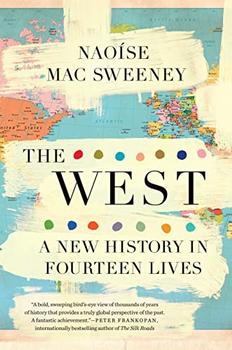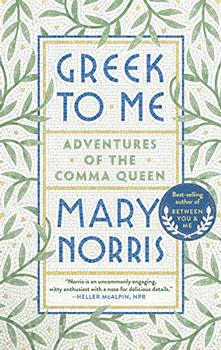Summary | Excerpt | Reviews | Beyond the book | Read-Alikes | Genres & Themes | Author Bio

Around the World in Twenty Languages
by Gaston DorrenIn 20 chapters of similar length, Gaston Dorren examines each of the most commonly spoken languages worldwide, giving the same amount of attention to Malay and Tamil as to French and English. The content of each chapter differs depending on what he finds most significant and unique. While the chapter on Japanese focuses on the ultra-gendered formality of the language, the one on Swahili largely addresses the impressive language fluency of African peoples. There is a helpful chart at the beginning of each chapter providing information about a language's ancestry, and loanwords imported from, and exported to, other languages. I especially enjoyed learning about the exports; I had no idea that Portuguese gave us tapioca, mandarin, baroque and marmalade. (For more interesting loan word facts, check out India: A Feast of Languages.)
Dorren shows the ways in which a country's history and politics can influence what language is spoken, particularly in regard to the effects of colonization. After India won independence from its British colonizers, Tamil speakers in the south resisted speaking Hindi, as they feared it would too greatly empower the Hindi speakers of the northern regions. Likewise, when Malay was made the official language of Malaysia in the 1960s, there was opposition by the various groups of ethnic minorities who had their own languages, however it has proven to be beneficial due to its wide reach in matters of trade. Dorren also illustrates the complex ways in which languages and cultures are interrelated, such as how using ideophones, details that convey "visual, tactile or mental sensations," in Korean comes across as more honest, and makes the speaker seem inherently more trustworthy to the listener.
He further explores the ways in which speakers standardize language and how successful such attempts are, recounting, for example, the French Language Academy's history and present-day role in preserving French culture. This chapter is rife with examples of gestures toward linguistic purity. Radio stations in France must play at least 35% French-language music, which is unpopular with listeners and station owners alike, who are being eclipsed by streaming services.
In the German chapter, Dorren introduces the "Weirdness Index," a tool used to multilaterally compare qualities of one language to another. This index uses 192 points of comparison, including word order and word sounds. Its creator, Tyler Schnoebelen, compiled it after studying 2,676 languages. I enjoyed reading how languages are similar and different from one another (and not just in relation to English).
Dorren is clearly fascinated with all the languages here, even those he was never able to learn, like Vietnamese. I appreciated that he didn't dumb things down or overly reduce to a smattering of trivia about sentence structure and cognates. Rather, he made me think about the impact of language on larger cultural questions. For instance, rather than simply describe the very particular word order of the German language, he comments that it's very difficult to improvise in German. That observation made me reflect on what humor must be like for native speakers.
Babel is a fun read for anyone, but will especially delight travelers and language-lovers. It's also an excellent choice if you want to learn another language but can't decide which one. For instance, Dorren remarks that Turkish is the easiest non Indo-European language to learn, so I'm now thinking of giving that one a try. I also appreciated the layout; I could read each chapter in a single sitting and simply read the next one when I returned. The book holds together well as a unit, but the individual chapters also work on their own and would be excellent to use in a geography or social studies classroom. The information in this book is accessible to longtime language scholars and casual readers alike; a delightful collection of 20 small windows to much larger worlds.
If you're interested in learning another language, Duolingo is a free online resource with user-friendly lessons available on 37 different languages.
![]() This review was originally published in The BookBrowse Review in January 2019, and has been updated for the
January 2020 edition.
Click here to go to this issue.
This review was originally published in The BookBrowse Review in January 2019, and has been updated for the
January 2020 edition.
Click here to go to this issue.

If you liked Babel, try these:

by Naoíse Mac Sweeney
Published 2023
Prize-winning historian Naoíse Mac Sweeney delivers a captivating exploration of how "Western Civilization" - the concept of a single cultural inheritance extending from ancient Greece to modern times - is a powerful figment of our collective imagination. An urgently needed emergent voice in big history, she offers a bold new account of ...

by Mary Norris
Published 2020
The Comma Queen returns with a buoyant book about language, love, and the wine-dark sea.
Your guide toexceptional books
BookBrowse seeks out and recommends the best in contemporary fiction and nonfiction—books that not only engage and entertain but also deepen our understanding of ourselves and the world around us.